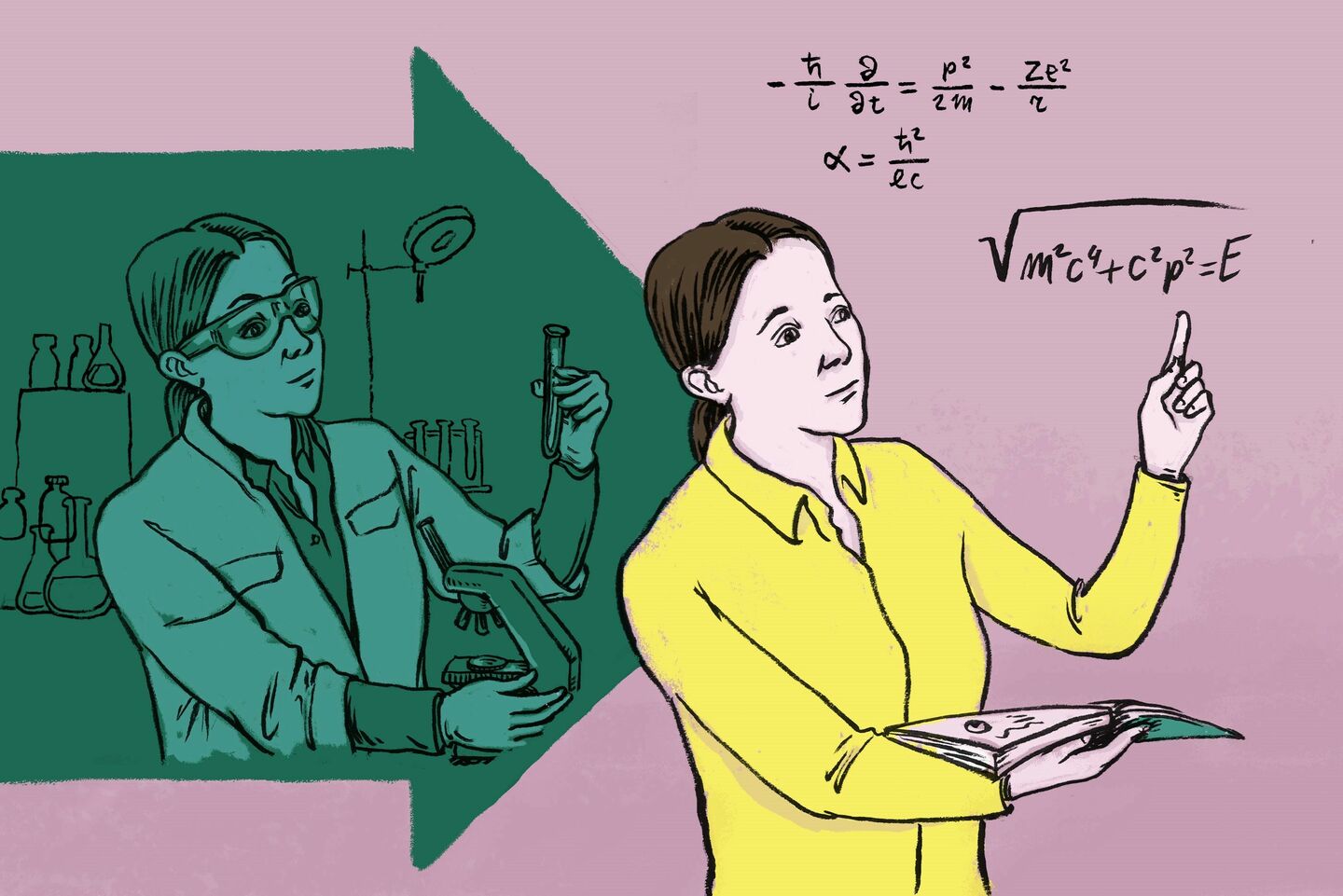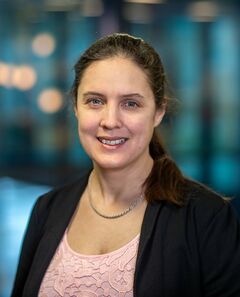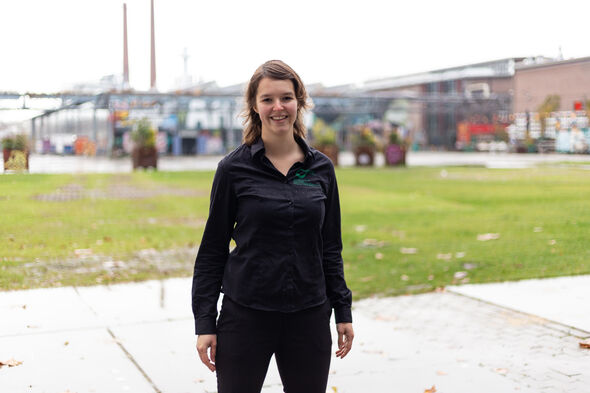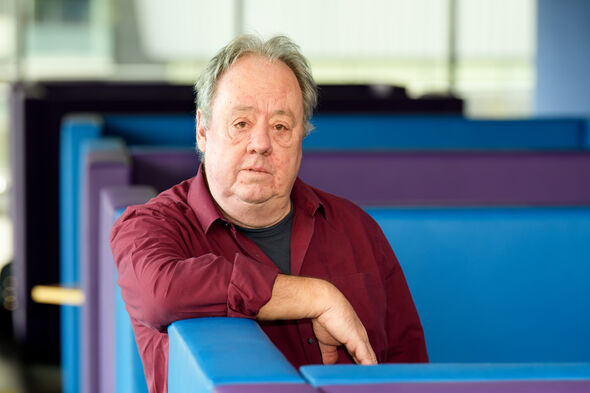
"ESoE deserves to become a department"
The choice to become a teacher often comes from the heart
The Eindhoven School of Education (ESoE) deserves the status of a department, says alumna Sanne Deijkers. She followed a double master's program and obtained her teaching qualification for physics. In this first part of a diptych about opting for education, she explains what it is that attracts her about this course and about being a teacher. A choice that must come from the heart, that much is clear. Regarding the shortage of teachers, it is desirable that more students choose to go in this direction.
To overcome the shortages in education, people like Deijkers are really needed. “Based on the labor market estimates, the ministers foresee a total shortage of 1,075 FTEs in teachers for the school year 2023/2024,” reports Voion, the Labor Market & Training Fund for secondary education, in 2019. In the region around the TU/e, this will concern 61 FTEs in 2024. Looking at that number nationwide, it is just a small shortage. According to DUO, the total of FTEs of teaching staff for secondary education concerns 59.900 in 2018. Already 1,100 FTEs less than the year before.
“Every year the ESoE has about 35 to 50 students who follow a master's program to become a teacher in a science subject,” says Lesley de Putter, assistant professor and manager Education and Student Affairs at ESoE. “Math students top the list, followed by physics students. Every year there are between 30 and 85 students in the minor for second-degree teaching qualifications.” This student distribution matches well with the job opportunities: the greatest shortage is of math teachers.
Two masters at the same time
De Putter taught at a secondary school herself and has also done PhD research at the ESoE. After her PhD, she started as a lecturer for didactics at the ESoE master Science Education and Communication (SEC). “We have a great diversity of students here, with ages ranging from 19 to 63 years old. There are a lot of students who are following two master's programs simultaneously.”
One of them is Sanne Deijkers. “I graduated from SEC in April 2020 and have now been working for six months as a PhD candidate at the department of Applied Physics. My research is partly focused on ALD, Atomic Layer Deposition, but also on the education at the department. I followed SEC in a double program, at the same time as I did a master at Applied Physics. I managed to stuff all that into a little over two and a half years.”
The crisis and the teacher shortage did play a small role in Deijker's choice: “I had known for some time that I wanted to go into education: I even checked whether the university offered the option to obtain a teaching certificate. With this situation I thought; ‘If I obtain my qualification right now, with a double master, I can start immediately if necessary’. If you already have a job, it is a lot more difficult. Now I had plenty of time for my learning process.”
Do you want to complete two master’s programs at the same time?
If, like Deijkers, you want to do a double program, some projects may count double, which means you can often complete two master's programs in three years, De Putter explains. "Normally, the SEC master's takes two years, but if you follow two master's programs simultaneously, you can save time. If you already have teaching experience, it can often be done even faster."
This concerns your first-degree qualification. If you only want a second-degree qualification, you can also do this by following an educational minor. With the second degree certificate you can teach the first three classes of havo and vwo (the highest levels in Dutch secondary education). With a first-degree qualification, you can also teach in the exam years of havo and vwo.
“I would certainly recommend the ESoE program, but the master more than the minor, because the latter often peaks at the same times as the major,” Deijkers explains. “That is less convenient. Although the minor can help to get a taste of the concept if you are not yet that sure. And speak a lot with people who have completed the program. However, each process is different, depending on what you've done before. In any case, I thought it was really cool. A tip I want to give is: take your time. It takes more time than you think. I managed to stuff it in about two and a half years, but if you can afford an extra six months, take that time. It gives you the peace of mind to discover what suits you best and it helps with you with your personal development.”
A teaching qualification instead of USE
Paul Neuraij is a tutor at ESoE, even though he is actually already retired. “Retired against my will. Especially in these times with a shortage of teachers, I think it is scandalous that I had to, I had no choice.” Fortunately for Neuraij, there was another option via EuFlex. With a wealth of experience as a physics teacher, transfer specialist (focusing on a smooth connection between secondary education and university, ed.), teacher of didactics and tutor at ESoE, he’s of great value for students who are new to teaching.
“In the time that I taught didactics, I have seen quite a few different students at the ESoE, as well as many different reasons for choosing education,” Neuraij says. “There are quite a few Industrial Design students who are afraid of not finding a job after their studies. So they opt for a part-time job in education and besides that, work on their portfolio. These types of students often choose the minor to obtain the second-degree certificate. Because for the master they often have to catch up too much of physics, mathematics or chemistry (the teacher options at ESoE). In addition, there are also students who say ‘I think it would be nice to become a teacher later, let's get the qualification right away. When I have a job and decide to go into education, I can start straight away,’ because it is much more difficult to obtain it while having a job. And then there are quite some people who choose the minor instead of the USE subjects. The betas often hate those,” Neuraij knows.
ESoE as a real department
Deijkers: “I really think it's a great program (the master SEC, ed.). There are so many different people walking around. If you are in a science program, you will find yourself surrounded by the same kind of people, but during an educational program you will meet the more social engaged people from the different departments. Discussing different teaching methods and building a new network together is really nice. Taking a look outside your own department. Only ESoE is currently a center of expertise instead of a department and it shows; there is less money and fewer resources. If you have two subjects that need a classroom: one taught by ESoE and one taught by a department, the department always has priority to get the classroom. I think that ESoE should be a department with the corresponding resources and money. Our graduation ceremony was streamed with Teams via a simple computer. Other programs had enough money for something festive, a real event. By turning it into a department, it gets the status it deserves. The fact that you can only follow a master and a minor at ESoE, should not matter.”
The ESoE is currently a center of expertise instead of a department and it shows; there is less money and fewer resources
Finding things out
“In the beginning you have to figure out a lot of stuff,” Deijkers says, looking back at her own student days. “What are you like as a teacher and how do you deal with students? Your first observational internship is very helpful during that time. You notice very quickly whether teaching suits you. I really like the social aspect; to work with the students, transfer my knowledge and keep them fascinated. Teaching is so dynamic; if you have a bad day, it will directly reflect in your class. But if you give positive energy, it shows too. It really is an interaction and that makes it special.”
“In my PhD track with additional teaching assignments, I see the combination of physics and teaching in practice,” Deijkers says. That’s how I see myself in the future as well: as a hybrid teacher. I really have my dream job now: in-depth research in physics, teaching and improving education. I don't know yet where I will be in five years. Maybe I’ll try the business world, which also seems interesting. You could combine that with teaching at a university of applied sciences. That's pretty common there. I wouldn't just do research in a small cubicle. The social aspect of education is very important to me. But first I will be working here at TU/e for the coming years. In addition to my research, I want to improve propaedeutic education. In that context I am involved in the redevelopment of Applied Natural Sciences (ANS) to an online modular form. The subject is compulsory for all freshmen but the form has to be changed due to corona.”
Neuraij: “The great thing about education, for me, is the interaction with students. But I don't want to convince people to choose this profession; you really have to want it. And you have to realize that if you choose this job, you are stuck with it. After three years, the business world no longer wants you. In the past, getting the license was a breeze. You could get it fast, during your studies. But the longer process we currently have, also has advantages: you can better assess whether education is a fit for someone.”




Discussion